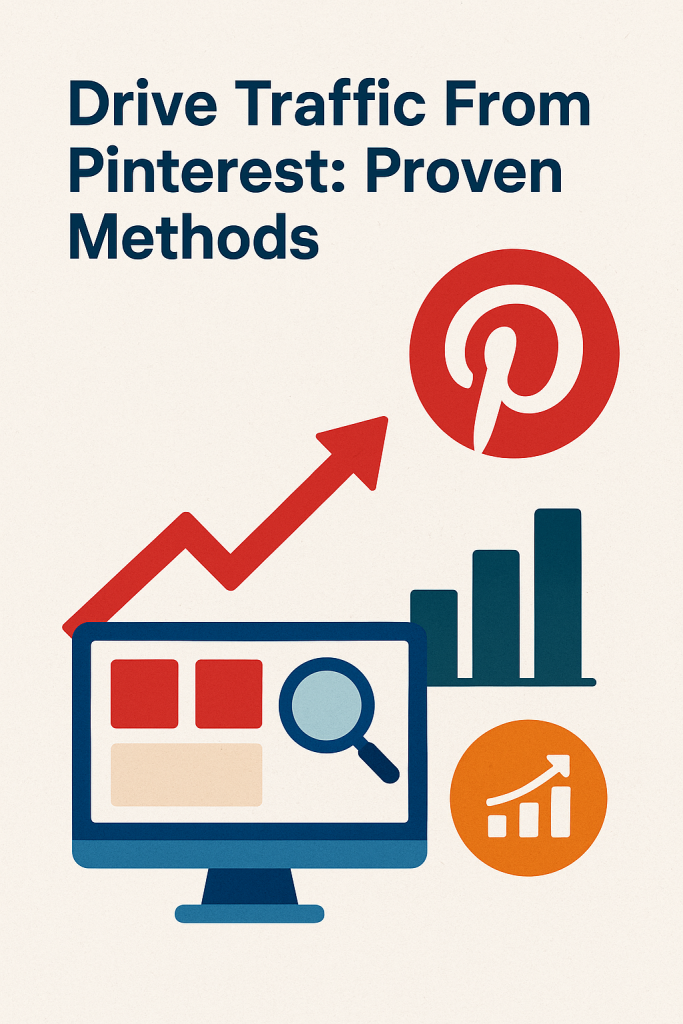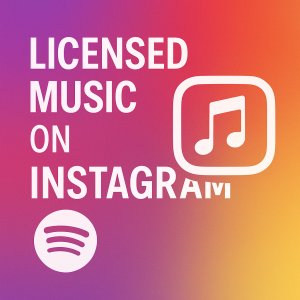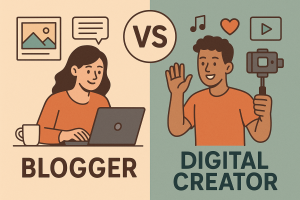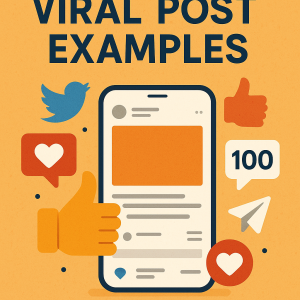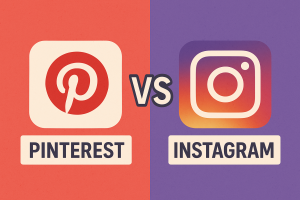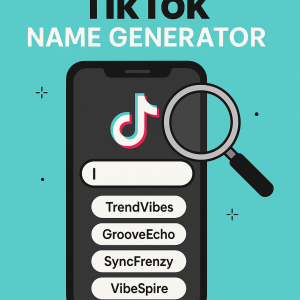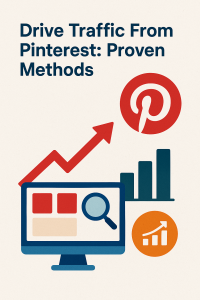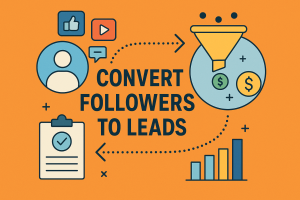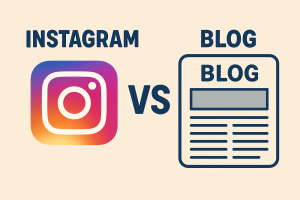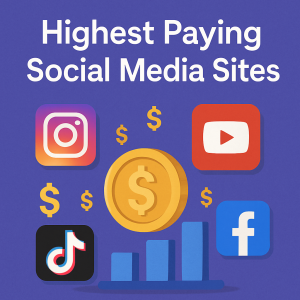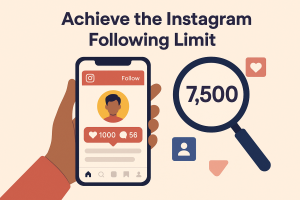Think of Pinterest as your secret weapon for growing your audience. Unlike typical social media, it’s a visual search engine where users actively seek ideas and solutions. This makes it a goldmine for bloggers aiming to attract engaged readers.
In this guide, you’ll learn actionable methods to make your content stand out. We’ll focus on designing eye-catching pins, crafting keyword-focused descriptions, and maintaining consistent posting habits. These steps help your work appear in searches and recommendations.
Successful creators reuse existing blog posts by creating fresh visuals and testing different styles. Scheduling tools like Tailwind simplify this process, ensuring your pins reach users when they’re most active. Regular updates keep your profile relevant and boost visibility.
Every tip here is backed by real-world success stories and expert data. Whether you’re new to Pinterest or refining your strategy, these techniques adapt to your goals. Ready to turn scrollers into loyal readers? Let’s dive in.
Key Takeaways
- Pinterest acts like a search engine, making it ideal for long-term blog growth.
- Visually appealing pins with clear text overlays perform best in user feeds.
- Use keywords in pin titles and descriptions to improve search rankings.
- Repurpose old content with new designs to maximize reach without extra work.
- Consistency matters—schedule pins weekly to stay visible.
Understanding Pinterest as a Visual Search Engine
Pinterest blurs the line between inspiration and action. Unlike Instagram or Facebook, where users scroll through friends’ updates, it prioritizes discovery over social interaction. Over 60% of weekly users visit to find products or ideas, according to Pinterest’s 2023 insights report.
Why Pinterest Stands Apart
While platforms like TikTok rely on viral trends, Pinterest thrives on evergreen content. A recipe posted today could still gain traction years later. Users don’t follow chronological feeds—they search keywords like “easy weeknight dinners” or “small garden ideas.”
“Pinners are planners. They’re 7x more likely to save content for future projects than social media users.”
| Platform | Primary Use | Content Lifespan |
|---|---|---|
| Idea discovery | Months to years | |
| Social sharing | 48 hours | |
| Networking | 5 hours |
Visuals Meet Search Intent
High-quality images grab attention, but keywords seal the deal. A pin about “budget DIY decor” needs bold text overlays and descriptive captions. Boards act like themed folders—organizing content into “Outdoor DIY Projects” or “Holiday Crafts” helps people find ideas faster.
Spend time refining board titles and descriptions. For example, a “Summer Recipes” board could become “Quick Summer Meals Under 30 Minutes” to target specific searches. This strategy keeps your profile relevant across seasons.
Getting Started with Your Pinterest Strategy
Your profile is the welcome mat to your content. Start by choosing a professional photo that reflects your brand—like a logo or headshot. Add a bio packed with search-friendly keywords related to your niche, such as “home decor tips” or “quick meal ideas.”
Profile Essentials That Convert
Optimize your website link by directing it to your latest blog post or landing page. Pinterest users often click through to explore further, so ensure this path is clear. Boards should mirror your blog categories but with keyword-rich titles like “Budget-Friendly Kitchen Upgrades” instead of generic terms.
Vertical images (2:3 aspect ratio) dominate feeds because they’re easier to view on mobile. Refresh old pins with brighter colors or updated text overlays. A 2023 study found pins with crisp visuals get 3x more saves than blurry ones.
Curate content by grouping similar posts into themed boards. If you write about gardening, create boards for “Small-Space Plant Ideas” or “Beginner Gardening Tools.” This matches what users type into the search bar.
Pin at least 5-7 times a day to stay active. Use a mix of new and repurposed content—a 2024 Tailwind report showed consistent profiles gain 3x more monthly views. Schedule pins during peak hours (8-11 AM and 7-10 PM EST) for maximum visibility.
Quick tips:
- Test different pin styles weekly
- Update board covers for visual harmony
- Use alt text to describe images for accessibility
Creating Engaging Pins for Your Blog Posts
Your pins act as digital billboards guiding users to your content. To stand out, blend creativity with strategy. Let’s explore how to craft visuals and text that turn casual browsers into loyal readers.
Design That Demands Attention
Start with bold colors that pop against Pinterest’s white background. A 2023 study found pins with text overlays receive 80% more saves than image-only designs. Use clear fonts for readability—avoid cursive styles that blur on mobile screens.
“Pins with contrasting colors and minimal text see 2x higher click-through rates.”
| Element | High-Performing Pins | Low-Performing Pins |
|---|---|---|
| Color Palette | Vibrant, limited to 3 colors | Muted or cluttered |
| Text Length | 5-7 words max | Paragraph-style captions |
| Image Clarity | High-resolution photos | Grainy or pixelated |
Words That Work Harder
Your pin title should answer a question. Instead of “Summer Recipes,” try “5 No-Cook Meals for Hot Days.” Include keywords naturally—like “budget decor tips” or “quick workouts”—to rank in the search bar.
Update older posts by creating fresh visuals. A home decor blog saw a 150% boost in views after redesigning pins for a 2-year-old article. Descriptions should mix keywords with curiosity: “Discover how these $10 upgrades transformed my patio” beats generic summaries.
Test multiple versions for each post. One pin might highlight results (“Before/After Kitchen Makeover”), while another focuses on process (“Step-by-Step Guide”). This approach keeps your content visible across different searches.
How to “drive traffic from pinterest” Effectively
Maximizing your blog’s potential requires more than just great ideas—it demands smart reuse. By transforming existing posts into fresh visuals and automating your workflow, you’ll keep your content circulating without triggering platform alarms.
Repurposing Content with Multiple Pin Variations
Sharing the same link repeatedly can flag Pinterest’s system. Instead, create 3-5 unique pins per blog post. Swap backgrounds, tweak text overlays, or test new angles like “Step-by-Step Tutorial” versus “Before/After Results.” A parenting blog doubled their monthly views using this tactic for a single recipe post.
“Variety prevents fatigue. Users engage more when they see different takes on valuable content.”
| Strategy | Manual Pinning | Scheduled Pins |
|---|---|---|
| Time Spent | 2 hours/day | 30 minutes/week |
| Consistency | Irregular | Daily posts |
| Monthly Views | 5,000 | 18,000+ |
Utilizing Scheduling Tools for Maximum Reach
Platforms like Tailwind analyze when your audience is most active. Set up a weekly batch of pins during peak windows—8-11 AM or evenings. One DIY blogger increased blog visits by 120% after scheduling 15 pins weekly across multiple boards.
Proven practices:
- Rotate keywords in titles: “Easy Wall Art” vs. “Budget-Friendly Decor”
- Test seasonal updates: Add “Summer 2024” to evergreen posts
- Check analytics monthly—retire underperforming designs
A fitness site redesigned pins for a 3-year-old workout guide, using current color trends. Their traffic jumped 90% in six weeks. Small tweaks yield big returns when paired with strategic timing.
Leveraging Keyword Strategies on Pinterest
Keywords are the backbone of Pinterest visibility. Users type specific phrases into the search bar to solve problems or find inspiration. Balancing broad terms with detailed phrases helps your content appear in more searches while targeting precise needs. Wondering where to focus your effort? Here’s our full Pinterest vs Instagram comparison.
Finding the Right Mix: Broad and Long-Tail Keywords
Start with general keywords like “gardening tips” to cast a wide net. Then drill down into niche phrases like “container gardening for shaded balconies.” Pinterest’s search bar suggests popular combinations as you type—use these to refine your list.
“Long-tail keywords attract 70% less competition but often convert better because they match exact user intent.”
| Keyword Type | Example | Best Use |
|---|---|---|
| Broad | Healthy Recipes | Board titles |
| Long-tail | Gluten-Free Air Fryer Snacks | Pin descriptions |
Analyze top-performing Pinterest boards in your niche. Notice recurring words in their titles and pin captions. A home decor creator discovered “farmhouse entryway ideas” outperformed generic terms, leading to a 40% boost in saves.
Refresh keywords every 6-12 months. A fitness influencer updated “home workouts” to “no-equipment routines” during gym closures, tripling her blog visits. Pair evergreen terms with trending phrases to stay relevant across years.
Quick actions:
- Use Pinterest’s analytics to spot high-performing keywords
- Test 2-3 variations per pin title
- Add location-based terms if targeting local audiences
Maintaining Consistency and Engaging with Group Boards
Consistency builds momentum on Pinterest. Unlike platforms where posts fade quickly, regular activity keeps your profile visible in the search engine rankings. A steady stream of fresh pins signals to the algorithm that your content deserves attention.
The Power of Routine and Community
Pinning daily doesn’t mean creating new images every day. Repurpose existing blog posts with updated text overlays or color schemes. A parenting blogger gained 2,000 followers in three months by pinning 3-5 times daily across themed boards.
“Group boards act like collaborative magazines. Joining 2-3 active ones triples your content’s potential reach overnight.”
| Group Board Strategy | Result |
|---|---|
| Join boards with 10k+ followers | 45% faster profile growth |
| Share others’ content weekly | Higher engagement rates |
Mix your business pins with curated ideas from trusted creators. This balance keeps boards dynamic while showcasing your expertise. Use Pinterest’s built-in analytics to spot duplicate pins—rotate designs every 6 weeks to stay fresh.
Actionable tips for sustainable growth:
- Schedule 70% original content, 30% curated finds
- Add unique descriptions to repinned images
- Engage with group board members through comments
Daily activity fuels the search engine’s preference for active profiles. One home decor account doubled their monthly views by pinning during peak hours (9-11 AM EST). Consistency turns casual browsers into loyal followers over time.
Analyzing and Optimizing Your Pinterest Performance
Your pin success isn’t random—it’s measurable and adjustable. Pinterest’s built-in analytics reveal what resonates with your audience. By tracking patterns, you’ll spot which ideas spark action and which need refinement.
Using Pinterest Analytics to Track Success
Start by reviewing your account overview weekly. Focus on three metrics: impressions (how often pins appear), saves (bookmarks for later), and clicks (visits to your blog). A 2024 study found creators who check analytics monthly grow 2x faster than those who don’t.
“Top performers spend 30% of their time analyzing data and 70% implementing changes.”
| Metric | What It Reveals |
|---|---|
| Impressions | Content visibility in feeds/searches |
| Saves | Long-term value of ideas |
| Clicks | Interest in your blog content |
Group similar pins in your strategy to compare performance. For example, pins with “budget-friendly” in the description might outrank those without. One lifestyle blogger boosted clicks by 50% after adding price ranges to titles.
Integrate Pinterest data with tools like Google Analytics. Create a dashboard showing which platform drives the most blog visits. This helps allocate time wisely—focus on high-converting boards first.
Quick optimizations:
- Update underperforming pin descriptions monthly
- Test two versions of each pin (A/B testing)
- Join group boards aligned with top-performing topics
Consistent tweaks matter more than big overhauls. A food account increased saves by 120% after adjusting post times based on analytics. Small changes, tracked regularly, yield a lot of growth over time.
Conclusion
Building a lasting presence on Pinterest combines creativity with smart planning. Start by creating eye-catching pins that highlight your blog’s value. Use keyword-rich descriptions and titles to appear in searches. Tools like Tailwind help maintain consistency without daily effort.
Experiment with different pin styles for the same post. Track progress through Pinterest Analytics to spot trends. Success comes from patience—update designs every few months and refine keyword lists based on performance.
Focus on your niche to attract engaged readers. A clear title like “10-Minute Meals for Busy Parents” performs better than vague phrases. Well-organized boards keep your profile relevant across seasons.
Ready to grow? Implement one strategy this week. Share your results with fellow creators. With regular tweaks and a niche-focused approach, your blog can thrive on this visual platform for years.

